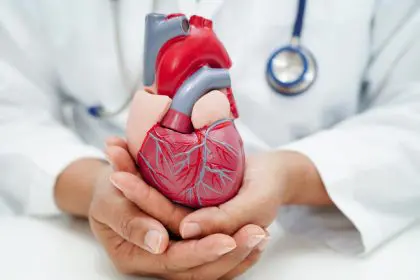Nearly half of American adults now face the challenge of elevated blood pressure, a silent condition that significantly increases the risk of heart disease, stroke, and other serious health complications. While medication remains an important treatment option for many, growing research suggests that natural approaches can effectively lower blood pressure numbers, sometimes reducing or even eliminating the need for prescription drugs.
The beauty of these natural strategies lies in their accessibility—most require no special equipment, minimal expense, and can fit seamlessly into everyday life. For those concerned about their cardiovascular health or looking to complement existing treatment plans, these evidence-based approaches offer promising pathways to better heart health.
What makes this approach particularly valuable is how these natural methods address the root causes of hypertension rather than simply treating symptoms. By focusing on lifestyle modifications that support overall cardiovascular function, these strategies often deliver benefits that extend far beyond blood pressure readings alone.
The powerful connection between movement and heart health
Recent research has revealed something truly remarkable about physical activity and blood pressure: even minimal increases in daily movement can trigger substantial physiological improvements. This finding challenges the common misconception that only intense exercise delivers cardiovascular benefits.
Scientists studying this relationship have categorized human movement into distinct levels to better understand their impacts on heart health. These range from sleeping and sedentary behavior to standing, slow walking, fast walking, and intensive exercise activities. Each level offers different benefits to cardiovascular health.
Comprehensive studies tracking over 14,000 participants discovered that most people exercise for an average of just 16 minutes daily while spending more than 10 hours in sedentary positions. Approximately a quarter of participants used medication to manage high blood pressure, with average readings hovering around 132/79 mmHg.
The most encouraging finding? Adding just five minutes of additional physical activity daily can help lower blood pressure, with research suggesting that replacing sedentary time with movement might decrease systolic pressure (the top number) by approximately 2 mmHg.
These improvements happen through several physiological mechanisms. Regular movement enhances heart efficiency, improves blood vessel elasticity, reduces inflammatory markers, and optimizes metabolic processes. Essentially, physical activity creates a cascade of beneficial changes throughout the cardiovascular system.
For those unsure where to begin, simple strategies can make a significant difference. Replacing short car trips with walking, taking stairs instead of elevators, or implementing “movement breaks” during long periods of sitting all contribute to better heart health. The key insight from current research suggests that consistency matters more than intensity—regular, moderate activity typically delivers better long-term results than occasional intense workouts.
The salt factor
The relationship between sodium intake and blood pressure has been extensively studied, yet many Americans remain unaware of where most dietary salt actually comes from. Contrary to popular belief, the salt shaker on your dining table typically contributes only about 10% of daily sodium intake.
The primary culprit? Processed and restaurant foods, which account for approximately 70% of the average American’s sodium consumption. Foods like bread, pizza, sandwiches, cold cuts, soups, and burritos often contain surprising amounts of hidden sodium that accumulate quickly throughout the day.
Health authorities typically recommend limiting sodium intake to 2,300 milligrams daily—approximately one teaspoon of salt—with lower targets of 1,500 milligrams for those with existing hypertension or cardiovascular concerns. Yet the average American consumes over 3,400 milligrams daily, far exceeding these guidelines.
The good news is that blood pressure often responds quickly to sodium reduction. Research shows that meaningful blood pressure improvements can occur within weeks of adopting a lower-sodium diet, with some individuals experiencing drops of 5-6 mmHg in systolic pressure.
Practical approaches to sodium reduction include reading nutrition labels carefully, choosing fresh whole foods over processed alternatives, and preparing meals at home where sodium levels can be controlled. Using herbs, spices, citrus, and vinegar to add flavor without sodium helps maintain taste while supporting heart health. Gradually reducing salt allows taste buds to adapt over time, while rinsing canned vegetables and beans removes excess sodium.
Many people find that as they reduce sodium intake, their palate adjusts, and they begin to detect and enjoy more subtle flavors previously masked by salt. This sensory adaptation typically takes four to six weeks but creates lasting changes in food preferences that support long-term heart health.
The DASH eating pattern
While individual dietary changes like reducing sodium can help lower blood pressure, research shows that comprehensive eating patterns deliver the most significant benefits. Among these, the DASH (Dietary Approaches to Stop Hypertension) eating plan stands out for its impressive results in clinical studies.
Developed specifically to combat high blood pressure, the DASH approach emphasizes fruits, vegetables, whole grains, lean proteins, and low-fat dairy while limiting saturated fats, red meat, and added sugars. This pattern provides key nutrients that support cardiovascular health, including potassium, magnesium, calcium, and fiber.
Clinical trials have demonstrated that following the DASH eating plan can lower systolic blood pressure by an average of 8-14 mmHg—comparable to the effects of some prescription medications. These benefits typically begin within two weeks of adopting the eating pattern and continue to improve over time.
What makes DASH particularly effective is its focus on food synergy rather than isolated nutrients. The combination of foods works together to improve several factors affecting blood pressure, including arterial function, fluid balance, and inflammatory responses. This holistic approach addresses multiple pathways involved in blood pressure regulation simultaneously.
The DASH approach includes generous servings of vegetables and fruits daily, complemented by whole grains, low-fat dairy, and modest portions of lean proteins. It also incorporates regular servings of nuts, seeds, and legumes while limiting added sugars and saturated fats.
Importantly, the DASH approach doesn’t require specialty foods or complex preparations. It works with commonly available foods and can be adapted to various cultural preferences and cooking styles. Many people report that beyond blood pressure benefits, they experience improved energy, better digestion, and more stable mood when following this eating pattern.
The weight-pressure connection
The relationship between body weight and blood pressure follows a remarkably consistent pattern: for many people, blood pressure rises as weight increases and falls as weight decreases. Research indicates that losing just 5-10% of body weight can reduce systolic blood pressure by an average of 5-20 mmHg in those who are overweight or obese.
What makes this connection particularly relevant is that approximately 70% of hypertension cases can be directly attributed to excess weight. The physiological mechanisms connecting weight and pressure include increased cardiac output, heightened sympathetic nervous system activity, and physical compression of the kidneys.
The location of excess weight matters significantly. Abdominal fat, particularly visceral fat surrounding internal organs, produces hormones and inflammatory compounds that directly impact blood pressure regulation. This explains why waist circumference often predicts cardiovascular risk more accurately than overall weight.
For those looking to improve both weight and blood pressure, several evidence-based approaches prove most effective. Focus on sustainable dietary changes rather than temporary “diets” while increasing physical activity through enjoyable, consistent movement. Addressing sleep quality and stress management also impacts both weight and blood pressure. Setting realistic, incremental goals builds confidence and momentum, while tracking progress through various metrics beyond just scale weight provides motivation. Many find success by working with healthcare providers to create individualized plans that address emotional and psychological factors affecting eating patterns.
The most encouraging aspect of the weight-pressure relationship is that meaningful blood pressure improvements often occur early in the weight loss process. Many individuals see significant blood pressure reductions after losing just 5-10 pounds, providing immediate health benefits and motivation to continue healthy lifestyle changes.
The stress connection few people recognize
While most people understand that diet and exercise affect blood pressure, fewer recognize the powerful impact stress has on cardiovascular health. The human stress response evolved as a survival mechanism, triggering hormonal cascades that temporarily raise blood pressure and heart rate to help navigate dangerous situations.
Modern life, however, often activates these same stress responses for extended periods without the physical release they were designed for. Chronic stress keeps stress hormones like cortisol and adrenaline elevated, gradually damaging blood vessels and training the body to maintain higher pressure even during rest periods.
Research indicates that regular stress management can lower systolic blood pressure by 2-10 mmHg. These techniques work by activating the parasympathetic nervous system—often called the “rest and digest” system—which counteracts the stress response and allows blood vessels to relax.
Effective stress-reduction approaches include mindfulness meditation, which reduces both blood pressure and stress hormone levels, and deep breathing exercises that activate the parasympathetic nervous system. Progressive muscle relaxation helps release physical tension, while regular physical activity reduces stress hormone production. Adequate sleep regulates stress hormones and supports cardiovascular recovery. Many also benefit from social connection, which improves emotional resilience, and time in natural settings, which reduces sympathetic nervous system activity.
For many people with elevated blood pressure, addressing chronic stress represents a missing piece in their treatment approach. Healthcare providers increasingly recognize stress management as a legitimate medical intervention rather than merely a lifestyle preference.
The effects of stress-reduction practices accumulate over time, with research showing that consistency matters more than duration. Brief daily practices maintained over months typically deliver better results than occasional longer sessions. Many people find that beyond blood pressure benefits, these techniques improve sleep quality, emotional wellbeing, and cognitive function.
The sleep factor most doctors miss
The connection between sleep quality and blood pressure remains one of the most overlooked aspects of cardiovascular health. Research increasingly shows that both sleep duration and quality significantly impact blood pressure regulation through multiple physiological pathways.
During normal sleep, blood pressure naturally drops by 10-20%—a phenomenon known as “nocturnal dipping.” This nightly pressure reduction gives the cardiovascular system essential recovery time. People who don’t experience this dipping pattern, often due to sleep disorders or poor sleep quality, face significantly higher risks of hypertension and cardiovascular events.
Studies show that addressing sleep issues can reduce systolic blood pressure by 2-10 mmHg. For individuals with sleep apnea—a condition strongly linked to resistant hypertension—proper treatment can lower blood pressure by 5-10 mmHg, sometimes eliminating the need for additional pressure medications.
The relationship between sleep and blood pressure works through several mechanisms. Quality sleep regulates stress hormones that directly impact blood pressure and reduces inflammation that damages blood vessels. Proper sleep supports healthy metabolism and weight management while affecting sodium retention and fluid balance. Adequate rest improves the body’s sensitivity to blood pressure medications and influences food choices and cravings that impact heart health. Sufficient sleep also supports healthy physical activity levels throughout the day.
For those looking to improve sleep quality, evidence-based approaches include maintaining consistent sleep and wake times and creating a cool, dark, quiet sleeping environment. Limiting screen exposure before bedtime helps signal the brain to prepare for rest, while reducing caffeine and alcohol, particularly in the afternoon and evening, improves sleep architecture. Many benefit from establishing calming pre-sleep rituals and addressing potential sleep disorders like sleep apnea. Managing stress through relaxation techniques further supports restful sleep.
Healthcare providers increasingly recognize sleep as a vital component of blood pressure management. Many now include sleep assessment as part of routine hypertension care, recognizing that addressing sleep issues can dramatically improve treatment outcomes.
The potassium balance essential for healthy pressure
While sodium reduction receives most attention in blood pressure management, increasing potassium intake plays an equally important role in maintaining healthy pressure levels. Potassium helps counterbalance sodium’s effects, relaxes blood vessel walls, and supports proper heart function.
Research indicates that increasing dietary potassium can lower systolic blood pressure by 4-5 mmHg and diastolic pressure by 2-3 mmHg in people with hypertension. These effects often occur even without sodium reduction, though combining both strategies delivers the most significant benefits.
Most Americans consume only about half the recommended potassium intake of 4,700 milligrams daily. This deficiency contributes to the nationwide prevalence of hypertension and increases vulnerability to sodium’s blood pressure-elevating effects.
Potassium works through several mechanisms to improve blood pressure. It promotes sodium excretion through the kidneys and reduces arterial stiffness while improving vessel elasticity. Potassium decreases the production of hormones that constrict blood vessels and supports proper electrical signaling in the heart. It reduces the blood pressure response to stress hormones, decreases inflammation in blood vessel walls, and optimizes fluid balance throughout the body.
The most effective sources of dietary potassium include leafy greens like spinach and Swiss chard, along with beans and lentils. Potatoes with skin, sweet potatoes, and winter squash provide excellent sources, as do bananas, oranges, and avocados. Yogurt, milk, salmon, tuna, nuts, and seeds also contribute significant amounts to the diet.
While potassium supplements exist, food sources typically provide better absorption and include additional beneficial compounds that support heart health. Additionally, high-dose potassium supplements can be dangerous for people with kidney problems or those taking certain medications, making food sources the safer option for most individuals.
Healthcare providers increasingly recommend potassium-rich eating patterns like the Mediterranean and DASH diets as first-line interventions for mild to moderate hypertension. These approaches naturally increase potassium intake while providing other cardiovascular benefits.
The remarkable benefits of consistent implementation
While each natural blood pressure strategy delivers benefits individually, research shows that combining multiple approaches creates synergistic effects that often exceed the sum of individual interventions. Comprehensive lifestyle programs have demonstrated systolic blood pressure reductions of 15-20 mmHg—comparable to taking multiple pressure medications but without side effects.
The most effective implementations share several common features. They focus on gradual, sustainable changes rather than dramatic short-term efforts and include regular monitoring to provide feedback and motivation. Education about the mechanisms behind each strategy helps maintain commitment, while social support through family involvement or community programs enhances success rates. Personalization based on individual preferences and health status increases adherence, as does ongoing healthcare provider involvement and guidance. Addressing psychological and emotional factors affecting adherence further supports long-term success.
For many people with mild to moderate hypertension, these natural approaches can effectively control blood pressure without medication. For those with more severe hypertension, these strategies often allow medication reduction while improving overall cardiovascular health beyond what medication alone can achieve.
The timeline for seeing results varies by individual and approach. Some strategies, like sodium reduction and stress management, can produce noticeable improvements within days or weeks. Others, like weight management and fitness improvements, typically show progressive benefits over months. Most people implementing multiple strategies see meaningful blood pressure improvements within 4-12 weeks.
Beyond blood pressure numbers, those who adopt these approaches often report improved energy, better sleep, enhanced mood, and greater overall wellness. These additional benefits create positive reinforcement that supports long-term adherence and continued health improvements.
For anyone concerned about blood pressure, these natural strategies offer an empowering way to take control of cardiovascular health. While medication remains an important option for many, these evidence-based approaches provide effective alternatives or complements to pharmaceutical treatment, often with broader health benefits that extend far beyond blood pressure readings alone.














